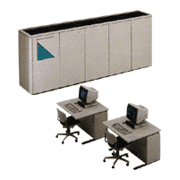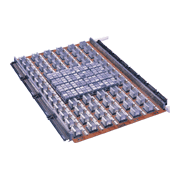This was a processor group of ultra-large general-purpose machines, comprised of 4 models (the M-680H, M-682H, M-683H and M-684H) plus the M-680D entry model.
At the time, the M-680H was in the world's top class in terms of speed, being 2--2.5 times faster than the previous M-280H in business processing, and 2--3 times faster than the previous M-280H in scientific and engineering calculations. By developing semiconductors with ultra-high integration, as well as the latest mounting technology and logic system technology, Hitachi realized a true "all LSI machine". Ultra high-speed processing was made possible by more sophisticated pipeline control, high-speed arithmetic mechanisms, high-speed decimal operation capability, high-speed buffer memory, and a 3-level memory configuration which provided high-capacity working memory. This was the only air-cooled system among competing machines in the same class.
The M-682H was a dyadic processor with two instruction processors, and had processing capacity about 1.7--1.9 times that of the M-680H.
The M-683H was comprised of three instruction processors. It could also operate with high availability due to the duplication of key processor mechanisms.
The M-684H was comprised of four instruction processors. Key processor mechanisms were duplicated, just as in the M-683H.
Hitachi also produced the M-680 Processor Group E Models, which were enhanced versions of these machines.
| M-680D | M-680H | M-682H | M-683H | M-684H | |
|---|---|---|---|---|---|
| Number of instruction processors | 1 | 2 | 3 | 4 | |
| Buffer memory capacity | 128KB | 256KB | 256KBx2 | 256KBx3 | 256KBx4 |
| Main memory capacity | 32-512MB | 64-512MB | 128-512MB | ||
| Number of channels | 16-64 | 32-64 | 48-128 | 64-128 | |
| Announcement date | May 1986 | March 1985 | May 1986 | ||




